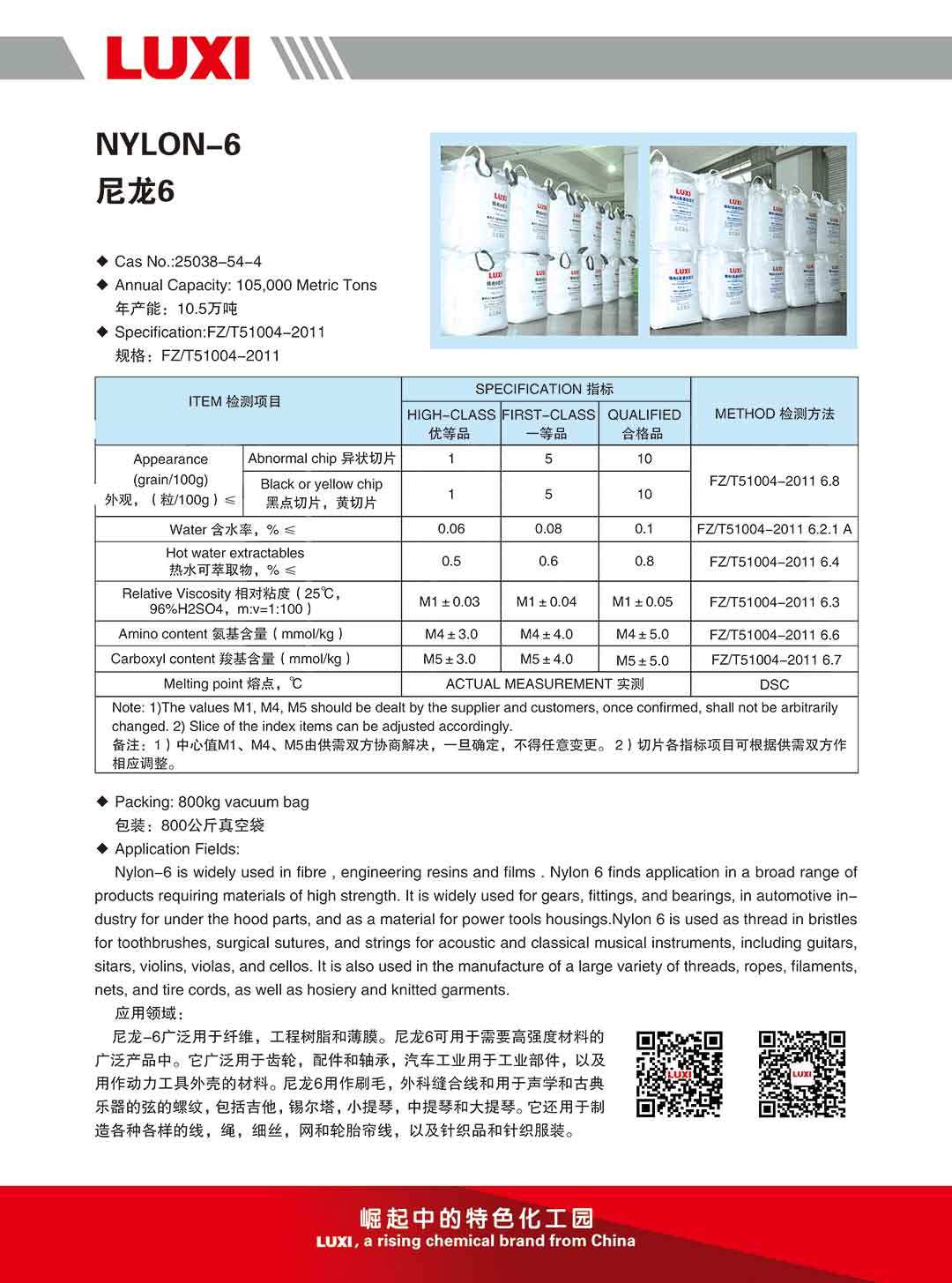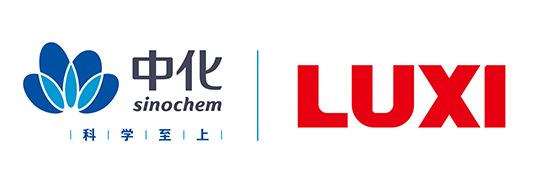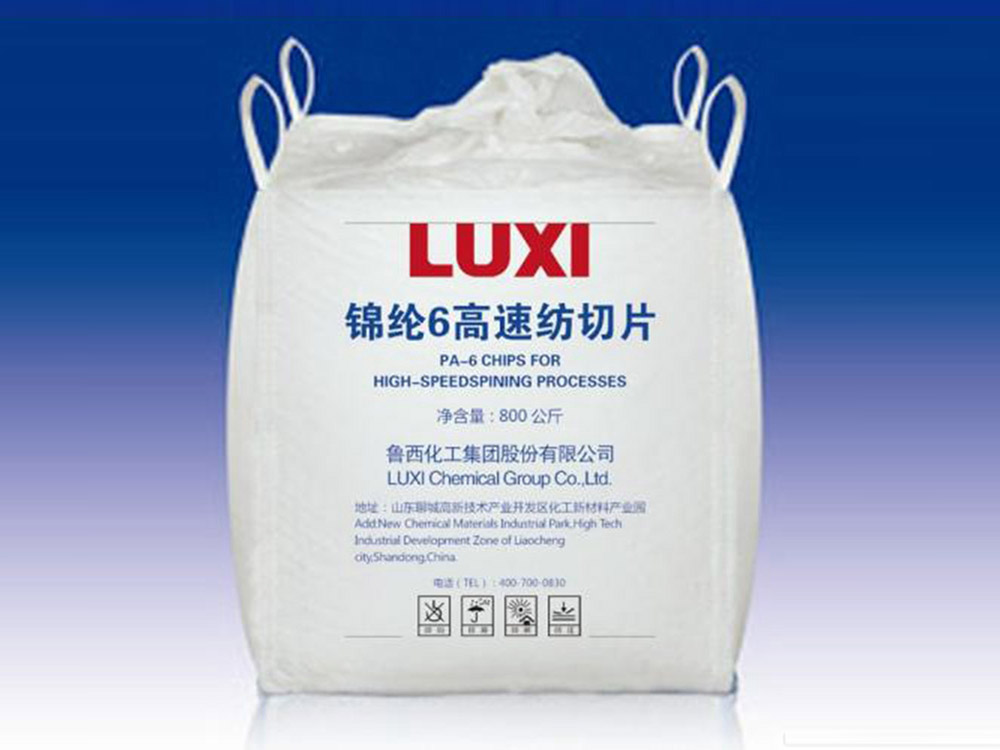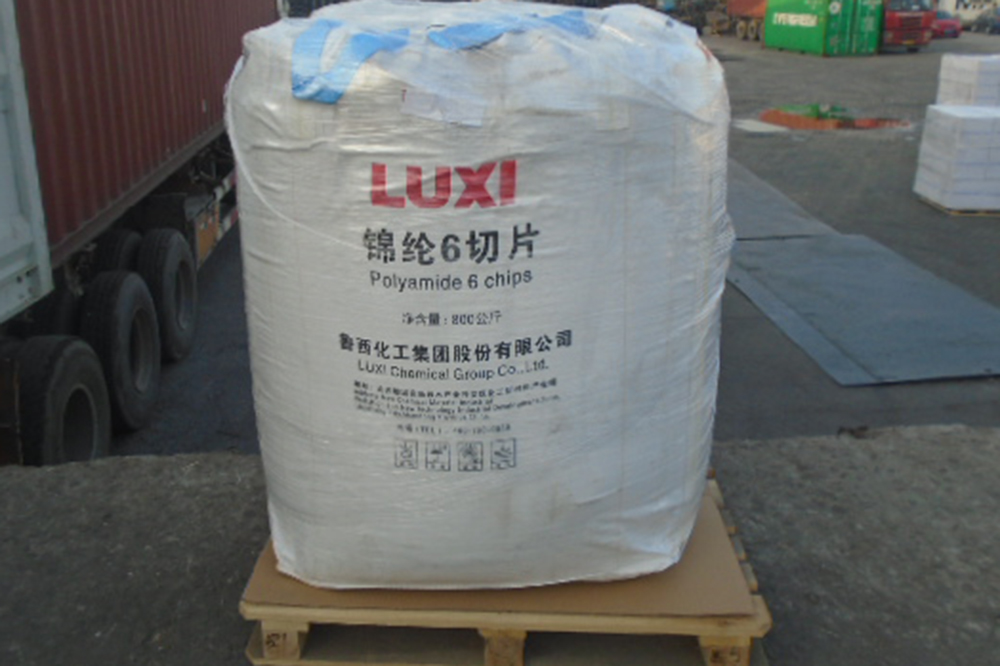zoom
Nylon-6
Your Questions and Comments
For inquiries to LUXI you may contact us also via-
Liaocheng, Headquarters
Tel: +86-635-3481038
Email: info@lxhg.com
Product Profile
1.Product Profile:
CAS:25038-54-4
Nylon 6 or polycaprolactam is a polymer developed by Paul Schlack at IG Farben to reproduce the properties of nylon 6,6 without violating the patent on its production. It is a semicrystalline polyamide. Unlike most other nylons, nylon 6 is not a condensation polymer, but instead is formed by ring-opening polymerization; this makes it a special case in the comparison between condensation and addition polymers. Its competition with nylon 6,6 and the example it set have also shaped the economics of the synthetic fiber industry.
2.Purity:
UDY-DT ,high-speed spinning
3.Packing:
800KG Bags.
4.Factory Name:
LIAOCHENG LUXI POLYAMIDE NEW MATERIAL TECHNOLOGY CO., LTD.
5.Application Fields:
Nylon-6 is widely used in fibre , engineering resins and films . Nylon 6 finds application in a broad range of products requiring materials of high strength. It is widely used for gears, fittings, and bearings, in automotive industry for underthehood parts, and as a material for power tools housings.Nylon 6 is used as thread in bristles for toothbrushes, surgical sutures, and strings for acoustic and classical musical instruments, including guitars, sitars, violins, violas, and cellos. It is also used in the manufacture of a large variety of threads, ropes, filaments, nets, and tire cords, as well as hosiery and knitted garments. It can also be used in gun frames, such as those used by Glock, which are made with a composite of Nylon 6 and other polymers. In manufacturing, Nylon 6 is used as washers.It has the potential to be reused as a technical raw material for the production of new Nylon 6, by depolymerization to caprolactam.
Polyamide 6 (Nylon 6), especially glass fibre grades, can be effectively fire retarded with halogen free products. Phosphorus-based flame retardant systems are used in these fire-safe polymers and are based on aluminium diethyl phosphinate and synergists. Main applications are in the electrical and electronics (E&E) industry.

CAS:25038-54-4
Nylon 6 or polycaprolactam is a polymer developed by Paul Schlack at IG Farben to reproduce the properties of nylon 6,6 without violating the patent on its production. It is a semicrystalline polyamide. Unlike most other nylons, nylon 6 is not a condensation polymer, but instead is formed by ring-opening polymerization; this makes it a special case in the comparison between condensation and addition polymers. Its competition with nylon 6,6 and the example it set have also shaped the economics of the synthetic fiber industry.
2.Purity:
UDY-DT ,high-speed spinning
3.Packing:
800KG Bags.
4.Factory Name:
LIAOCHENG LUXI POLYAMIDE NEW MATERIAL TECHNOLOGY CO., LTD.
5.Application Fields:
Nylon-6 is widely used in fibre , engineering resins and films . Nylon 6 finds application in a broad range of products requiring materials of high strength. It is widely used for gears, fittings, and bearings, in automotive industry for underthehood parts, and as a material for power tools housings.Nylon 6 is used as thread in bristles for toothbrushes, surgical sutures, and strings for acoustic and classical musical instruments, including guitars, sitars, violins, violas, and cellos. It is also used in the manufacture of a large variety of threads, ropes, filaments, nets, and tire cords, as well as hosiery and knitted garments. It can also be used in gun frames, such as those used by Glock, which are made with a composite of Nylon 6 and other polymers. In manufacturing, Nylon 6 is used as washers.It has the potential to be reused as a technical raw material for the production of new Nylon 6, by depolymerization to caprolactam.
Polyamide 6 (Nylon 6), especially glass fibre grades, can be effectively fire retarded with halogen free products. Phosphorus-based flame retardant systems are used in these fire-safe polymers and are based on aluminium diethyl phosphinate and synergists. Main applications are in the electrical and electronics (E&E) industry.

Related Products
Close
Copyright © 2023 LUXI GROUP 鲁ICP备10203139号
Technical Support:Cross Web




